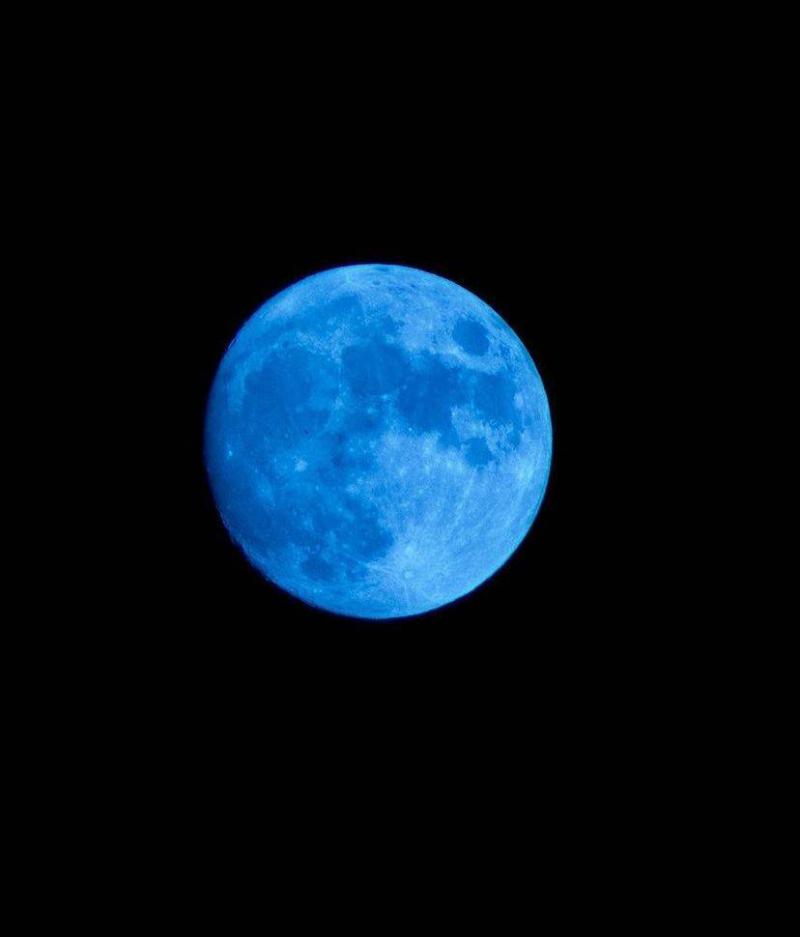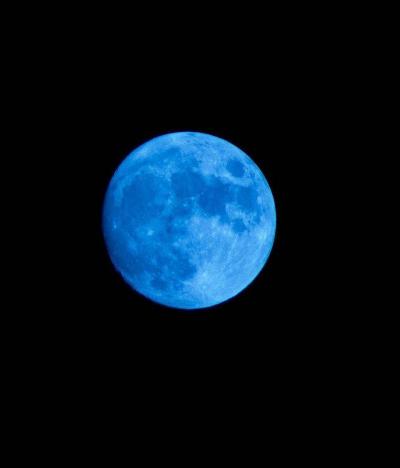In a rare phenomenon that occurs every 10 to 20 years, the world has witnessed the appearance of the "giant blue moon." This phenomenon results from the moon moving at an average distance of 384,400 kilometers from Earth and being about 363,000 kilometers away, the point in its elliptical orbit closest to Earth. Blue moons are rare occurrences, and they are not always full moons; they happen when the Earth's atmosphere contains dust or smoke particles around 900 nanometers in size or slightly larger. This size of particles is very effective in scattering red light. The moon can appear blue due to light being refracted through these particles when present in the air.
The giant blue moon is generally defined as the third full moon in a season containing four full moons, although the term is sometimes used to refer to the second full moon in a single month. This is what occurred this month after its first appearance at the beginning of August. According to astronomers, the last occurrence of the giant blue moon was in 2021, and it is expected to appear again in nine years, in 2032.
The term "giant blue moon" refers to the appearance of a second full moon in the same month, termed as the calendrical blue moon, followed by a fourth full moon in a single season, referred to as the seasonal blue moon. The season here means the period between solstices and equinoxes; for example, summer begins on June 21, known as the summer solstice, and ends on September 23, referred to as the autumnal equinox.
### When Does the Astronomical Blue Moon Phenomenon Occur?
Dr. Antoine Tannous, a technological expert and university professor, explained in an interview with "Werdna" that "this phenomenon has nothing to do with the color," noting that it occurs when the moon is at its closest point to Earth, making the full moon appear up to 14% larger. He revealed that "this phenomenon will repeat in August of next year and in May 2026," pointing out that the giant moon also appeared on August 1 of this month.
A full moon occurs when the moon is on the opposite side of Earth from the sun, a position it reaches approximately every 29.5 days. Technically, its celestial longitude is 180 degrees away from the sun in the sky, and the moon's orbit is tilted about five degrees from Earth's orbital plane. Thus, even when the moon is behind the Earth, it is not always in Earth's shadow, and a lunar eclipse occurs when it passes through Earth's shadow; however, this will not happen this time.
For observing the giant blue moon, it depends on the timing of the moon phase relative to the time zone of the person observing, as this matter is based on the moon's position concerning Earth rather than the observer's position on Earth.
At the same time, the giant moon phenomenon refers to the time when a full moon coincides with perigee, the point in the moon's orbit when it is closest to Earth. At that time, the moon appears slightly larger than usual, thus brighter and more illuminated, although it may not be noticeable to an average observer without more professional equipment.
### Can the Seasonal and Monthly Blue Moons Occur Together?
Seeing both the seasonal blue moon and the monthly blue moon in the same year is very rare. For this to happen, there must be 13 full moons between consecutive solstices in December for the seasonal blue moon, and 13 full moons in a calendar year for the monthly blue moon, including two full moons in the same month. This phenomenon will occur in 2048, with the monthly blue moon appearing on January 31 and the seasonal blue moon on August 23. It will be seen again 19 years later in 2067.
### Does the Moon Actually Appear Blue?
Tannous clarified that "the blue moon term has nothing to do with the actual color of the moon," although the moon may visually appear bluish under certain weather conditions. For example, volcanic eruptions or fires can release particles into the atmosphere of the right size to preferentially scatter red light. He added, "In 1883, the deadly eruption of Krakatoa in Indonesia killed 36,000 people, and the spread of sulfur dioxide and ash in the air made the moon appear blue, as volcanic dust particles blocked red light while allowing other colors to filter through."
### Social Media Commentary
In response to the phenomenon, activists on social media shared video clips about the giant blue moon, which sparked engagement.




